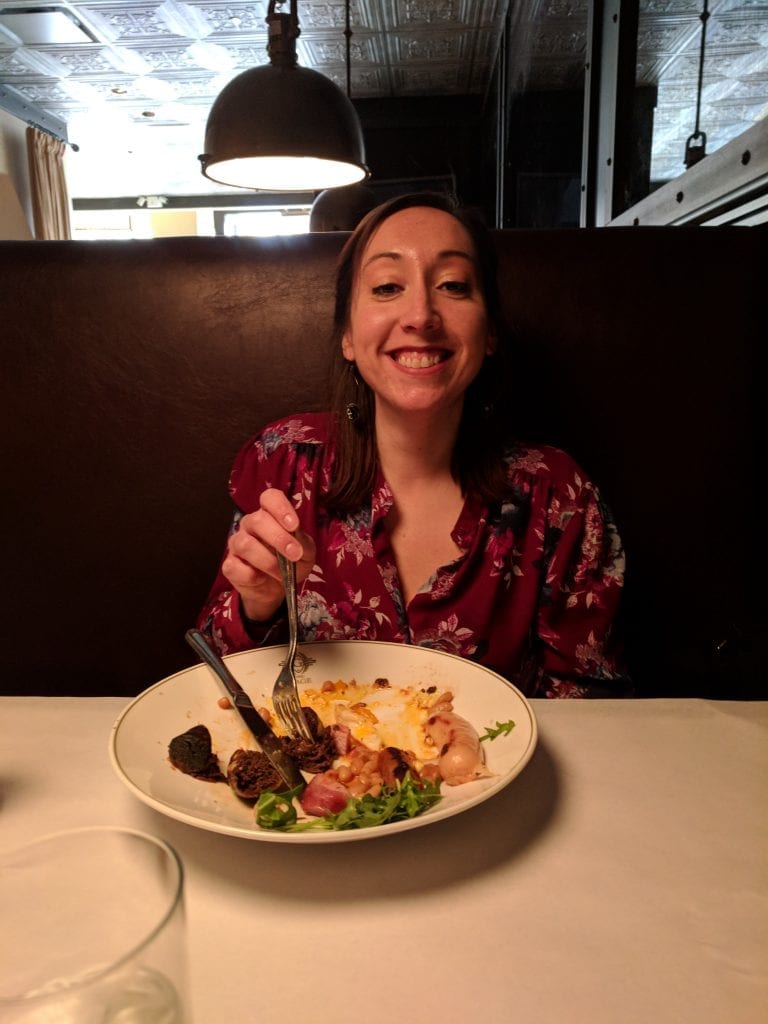Every year, around this time, more than two decades ago, the first-graders of St. Mary’s Elementary School would gather into the first floor lobby of their brick school building, which was dwarfed, like a first-grader to a sixth-grader, by the soaring, heaven-scraping church in front, and sit their bony little bottoms on carpet worn down from more than four decades of Mary Janes, saddle shoes, Reeboks, and now Nikes.
They were, around this time, used to gathering in such a way, as there was an Advent something or another happening in these makeshift assemblies once a week every December, when the whole school of bony little bottoms would swim out from their individual classrooms and sit together on that same worn carpet and sing and read and light a candle in anticipation of Santa Jesus coming to town. Purple. Purple. Pink. Purple.
But this first-grader thing was just for the first-graders, which seemed very special. Both classes would sit down to listen to Mrs. Sinnot tell a story, whether she was your first-grade teacher or not, which also seemed very special; any shift in the natural school day order created a little baby-sized buzz of excitement.
Now, this Mrs. Sinnot (pronounced sin-ut, but it’s, indeed, very ironic to think of a Catholic school teacher named SIN-NOT… maybe I’m remembering the spelling incorrectly or maybe this is just another little universe miracle we can all thank baby Santa-Jesus for later), this Mrs. Sinnot was just wonderful, as so many first-grade teachers are. Her salt and pepper hair was cropped to the exact dimensions popular with fairies around that time, and she was about the size of the half-pint chocolate milk cartons I’d cup like gold coins in my palm each day in the cafeteria lunch line.
We were gathered here, like the first-graders before us and the first-graders yet to come, to listen to Mrs. Sinnot read aloud her favorite book: “Strega Nona” by Tomie dePaola.
Published in 1975, “Strega Nona” is about an old woman in Southern Italy who is a witch doctor (!) (which is rad but, mind you, she’s never called as much in this Catholic school setting) and she travels the countryside helping cure villagers’ maladies, like warts, because this is a kid’s book and the bubonic plague is some heavy shit.
She also makes pasta. A lot, lot, lot of pasta. Because… her pot is magic! And this magic pot can make as much pasta as Strega Nona ever wants, as long as she blows three kisses <kiss, kiss, kiss> into the pot after singing her magic, pasta-producing spell. (Today this spell is called Grubhub.)
All is well in Strega Nona’s softly lit world, where the colors are creamy and the edges are not sharp, until one day, a man named Big Anthony, her helper, overhears her spell but doesn’t see her do the three-kiss closer <kiss, kiss, kiss>. So, with good intentions but not enough information, Big Anthony makes a magic pot of pasta… but doesn’t know how to turn it off. So pasta grows and goes and grows and goes until it threatens to drown out the whole village in its doughy doom!
When Strega Nona returns, feet sore from a hard day traipsing the hills to bring kindness and, I presume, lavender oils to the warty townspeople, she stops the spell and makes Big Anthony clean up the mess by handing him a fork. Mangia!
… I love this Strega Nona story so much, especially because it’s tied to such a happy memory—someone lovely reading aloud, in a mysteriously exciting school-day kind of way. But even so, I completely forgot about Strega Nona and her magic and that there was ever a time when I was innocent enough to delight in nothing but the imagining of pasta taking over a whole town.
Then I saw a random headline somewhere about Tomie dePaola’s new book “Quiet,” and it wasn’t his name that alit me from within, but that unmistakable illustrative style. I saw the gentle outline of his characters, the thoughtful pastel colors from his worlds, and like the snap-pop of a lighter, my mind shot out “STREGA NONA” from the murky depths, and off I went chasing the clickbait. Finding meaningful stuff in such as way is modern day magic, yes?
“Quiet,” like Strega Nona, is also magical, with illustrations like a hug, but the magic is found in something we all have. No secret recipe here. No fated headline coming your way. Instead, the magic can be found in quiet. In stillness. In the <kiss, kiss, kiss> of shhhhh-ing that can stop, not pasta, but a brain from overflowing.
“Your mind is so busy. You have to train it to quiet down.”
Tomie depaola
Read the book here or the Kirkus review here. Related: This wonderful meditation on stillness, gifted to me recently from a new friend.
Slow down.
Listen.
Enjoy.
Mangia.
Kiss, kiss, kiss.














